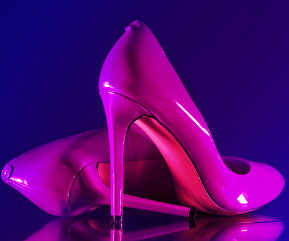Many wonder whether men’s and women’s shoes are the same size. The difference is quite subtle, but there are some key differences. For example, men’s shoes are generally longer, wider, and softer. A good rule is that women should choose shoes the same width as their feet. They will have ingrown toenails, bunions, corns, or hammertoes if they aren’t. Luckily, there’s a women’s shoe width chart available.
 Men’s shoes are longer.
Men’s shoes are longer.
Although men’s shoes are typically longer and wider than womens shoes, the two styles share similar characteristics. Men’s shoes are usually thicker and longer, while women’s shoes are lighter and have softer midsoles. Men should generally choose shoes that fit their foot size, but if you are unsure, buy a size larger. For more information, read this article. Also, see the differences between men’s and women’s shoe sizes.
One significant difference between men’s and womens shoes is the width. Men’s shoes are usually wider and longer, and the width is usually one full width wider than women’s. For men with wide feet, you should buy a wider pair. The extra width should be proportionate to the shoe size. To ensure you’re getting the right fit, buy a pair one size wider than your partner’s.
Wider
If you have wide feet, wide-width shoes are the ideal choice. These shoes are deeper from top to bottom and feature a generous instep to accommodate wide or swollen feet. While moving to a wider width will give you a wider shoe, it can also be uncomfortable, cause blisters and chafing, and alter your gait. To find a pair that fits comfortably, you can measure your instep to see if you need a wider shoe.
While D width is the standard size for men, the width of women’s footwear typically varies between 4.2 and 5.2 inches across the ball of the foot. Therefore, wider women’s shoes are generally narrower than those in the D or E width. The only exception to this rule is the size E, which is an Extra Wide shoe. While a wide shoe will fit most women, you will find some men’s shoes in sizes up to 10E.
Lighter
Runners will appreciate the comfort of a pair of lighter women’s shoes. Lighter shoes have improved biomechanics, reducing running energy expenditure and improving stride economy. In addition, many brands of lightweight shoes use advanced biomechanics technologies to analyse their runners’ stride and gait patterns, then develop proprietary foams that help return more energy with every footstrike. Eventually, these new technologies will allow runners to run faster than ever.
They have flex grooves.
While men and women have different bone structures, both have similar motions in their articular joints, which is one reason why women’s shoes often have deeper flex grooves than men’s shoes. Flex grooves are the only significant difference between men’s and women’s shoes. These grooves help a running shoe adapt to a woman’s foot’s unique motion. However, some women may experience forefoot pain or numbness if their shoes bend in this area.
Nike has made some womens shoes with flex grooves. The Nike Free is one popular choice. Its liberally grooved midsole provides enough cushioning for mild runs but not for intensive training. The upper is made of breathable mesh, while the midfoot is soft. In addition, the flex grooves in the heel and outsole allow your foot to move naturally as you run. Flex grooves in a running shoe can help your feet reduce fatigue and maximise your performance.
Buying a pair of women’s shoes can be challenging, but it’s not impossible. If you know where to look, you can find a variety of fantastic styles from some of the world’s best brands, and the prices are reasonable, too. In this article, we’ll look at some things you should remember. A good pair of shoes is necessary, and the right pair can make all the difference in how you feel.
Casoww says:
cenforce online heart – cialis daily brand viagra online aware
May 8, 2024 — 1:31 pm